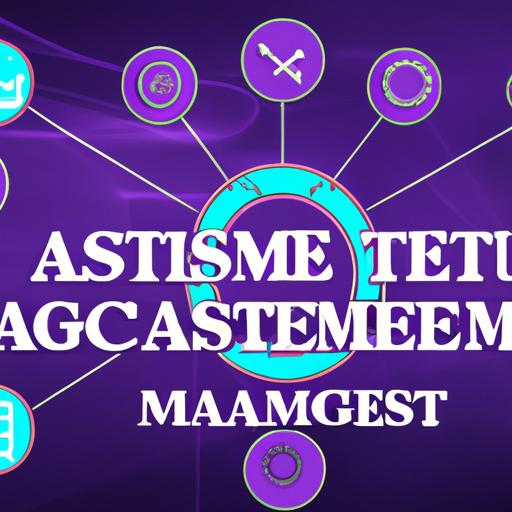Introduction
In a world where digital content reigns supreme, the need for efficient organization and management of digital assets is more critical than ever. Enter Digital Asset Management (DAM) – a game-changer for businesses striving to streamline their digital workflows and enhance productivity. At the core of DAM lies a plethora of powerful features designed to revolutionize the way we handle our digital assets.
From images and videos to documents and presentations, digital assets are the lifeblood of modern businesses, serving as the foundation for marketing campaigns, branding strategies, and internal operations. Without a robust DAM system in place, the chaos of scattered files and outdated versions can quickly overwhelm even the most organized teams. However, with the right DAM features at your disposal, you can unlock a world of efficiency and creativity in the digital realm. Let’s delve deeper into the realm of digital asset management features and discover how they can propel your business to new heights of success.
Importance of Digital Asset Management Features
Why Robust DAM Features are Essential
In today’s fast-paced digital landscape, the sheer volume and diversity of digital assets can overwhelm even the most organized businesses. Without a structured approach to managing these assets, chaos ensues, leading to inefficiencies, wasted time, and missed opportunities. This is where robust Digital Asset Management (DAM) features come into play, offering a lifeline for businesses looking to navigate the digital maze with ease.
Benefits of Efficient Digital Asset Management
Organizing, storing, and sharing digital assets may seem like simple tasks on the surface, but the devil is in the details. With the right DAM features in place, businesses can experience a myriad of benefits, including streamlined workflows, enhanced collaboration, and improved asset security. By leveraging the power of DAM features, organizations can unlock the true potential of their digital assets, driving innovation, and accelerating growth in today’s competitive digital landscape.
Key Digital Asset Management Features
Metadata Management: Enhancing Organization and Categorization
In the realm of digital asset management, metadata reigns supreme as the unsung hero that facilitates seamless organization and categorization of digital assets. By attaching relevant metadata tags to each asset, you can quickly retrieve and identify specific files based on attributes such as keywords, descriptions, and creation dates. This feature not only simplifies the search process but also ensures that your digital assets are structured in a logical and accessible manner.
Version Control: Keeping Up with the Latest
In the dynamic landscape of digital content creation, maintaining version control is paramount to ensuring that the most up-to-date versions of your digital assets are in use. With version control features integrated into your DAM system, you can track the evolution of each asset, monitor changes made by team members, and revert to previous versions if needed. This not only minimizes the risk of using outdated content but also fosters collaboration and accountability within your team.
Best Practices for Implementing Digital Asset Management Features
Tips for Selecting the Right DAM System
Choosing the right Digital Asset Management (DAM) system is a crucial decision that can significantly impact your organization’s efficiency and productivity. When selecting a DAM system, it’s essential to consider your specific business needs, the size of your digital asset library, and the scalability of the system. Look for features such as robust metadata management, user-friendly interface, and seamless integration with other tools to ensure a smooth implementation process.
Training and Onboarding Strategies for Employees
Implementing a new DAM system is not just about the technology; it’s also about effectively onboarding and training your employees to use the system to its full potential. Providing comprehensive training sessions, creating user guides, and offering ongoing support are essential components of a successful DAM implementation. By empowering your team with the knowledge and skills to navigate the DAM system efficiently, you can maximize the benefits of your investment and drive greater collaboration and productivity within your organization.
Regular Maintenance and Updates
To ensure that your DAM system remains efficient and secure, regular maintenance and updates are essential. Stay on top of software updates, security patches, and system enhancements to keep your DAM system running smoothly and protect your digital assets from potential risks. By establishing a routine maintenance schedule and implementing best practices for system updates, you can safeguard your digital assets and ensure the long-term success of your DAM implementation.
Case Studies of Successful Implementation of Digital Asset Management Features
Real-Life Transformations
In the fast-paced world of business, success stories speak volumes about the power of effective digital asset management features. Take, for example, Company X, a leading multinational corporation struggling to maintain consistency across its global marketing materials. By implementing a comprehensive DAM system with advanced metadata management and search functionalities, Company X witnessed a remarkable transformation in its marketing operations. The ability to quickly locate and share digital assets across departments not only saved time but also ensured brand consistency across all channels.
Enhancing Workflow Efficiency
Another noteworthy case is that of Company Y, a creative agency grappling with version control issues and scattered digital assets. With the integration of version control features within their DAM system, Company Y experienced a significant boost in workflow efficiency. Team members could now collaborate seamlessly on projects, confident in the knowledge that they were working with the latest versions of digital assets. This newfound efficiency not only saved time but also improved the overall quality of their creative output, ultimately leading to increased client satisfaction and repeat business.
Conclusion
In conclusion, the world of digital asset management features is a dynamic landscape filled with possibilities for businesses looking to optimize their digital workflows. By harnessing the power of metadata management, version control, search and retrieval capabilities, permissions and access control, integration with other tools, and analytics and reporting, organizations can transform the way they handle their digital assets.
Remember, the key to success lies in selecting the right DAM system that aligns with your business needs and investing in proper training for your team to leverage its full potential. By implementing best practices and learning from successful case studies, you can pave the way for a more efficient and streamlined digital asset management process.
So, why wait? Embrace the world of digital asset management features today and unlock the true potential of your digital assets. With the right tools and strategies in place, you can take your business to new heights and stay ahead in the fast-paced digital landscape. Let’s revolutionize the way we manage and utilize digital assets – the future is in our hands.


